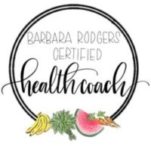With the obesity epidemic on the rise, many consumers are concerned about their well-being and are eager to take steps to eat healthier. One of the most important things you can do to stay healthy is to add more fruit and vegetables to your diet. Fruit and vegetables contain vital nutrients your body needs to function properly and fight off disease. Vegetables, especially are key, as they contain vitamins, minerals and antioxidants you can’t necessarily get from other foods or supplements. While most people include some produce in their diet, the majority of people don’t eat enough vegetables and often eat a only a few varieties. There also seems to be confusion among consumers regarding which type of produce to purchase and the benefits. That is why education is key when choosing produce.

In my book, Wholey Cow A Simple Guide To Eating And Living, I talk about making smarter choices to eat healthier and one of the smartest things you can do is reach for more rainbow colored fruits and vegetables. The Standard American Diet (SAD Diet) includes large portions, often with meat as the main course. It is important however, to make vegetables more of a focus for your meals. Get in the habit of filling your plate with plenty of colorful foods.
Vegetables can also be included as a healthy snack. Sweet vegetables add a crunchy taste and also help satisfy cravings for other sweets, such as cookies, cake or candy. Try adding carrots, bell peppers, snap peas, etc., as part of a healthy morning or afternoon snack.
Many people today eat out several times a week or more. While eating out may be convenient, most restaurants serve large portions and often use ingredients that may not be the healthiest for your body. Unhealthy oils, high carbohydrate foods and sugar, unfortunately are often found in restaurant meals. A healthier option for consumers is to make more home-cooked meals. When you eat at home, you are in charge of what you serve and how it is prepared. You also have the opportunity to choose healthier ingredients. When out grocery shopping, make sure you choose more whole foods, especially plenty of rainbow colored fruits and vegetables.
Organic vs. Conventional Produce
Organic produce is always your best bet, since it is grown without pesticides and harsh chemicals. If you are on a budget and can’t afford organic produce, don’t worry. Conventional produce is still a better option than filling your grocery cart with junk food items such as chips, crackers, cookies or soda pop. Just make sure you thoroughly clean your produce before using, to help remove some pesticides. Tip: (Try mixing three teaspoons of baking soda with water in a sink or bowl and scrub your produce with a vegetable brush using the solution. Make sure you allow the produce to soak for 3 minutes, or so after scrubbing and then rinse.)
If you interested in reading more about pesticides in produce, you might want to check out the website for the Environmental Working Group (EWG). They provide a FREE downloadable guide, which contains a list of the most heavily sprayed produce, as well as a list of produce considered “clean” and safe to buy conventionally. The 2018 list was recently published, so I wanted to make sure to pass it along.
2018 Shopper’s Guide to Pesticides in Produce
- Strawberries
- Spinach
- Nectarines
- Apples
- Grapes
- Peaches
- Cherries
- Pears
- Tomatoes
- Celery
- Potatoes
- Sweet Bell Peppers
Plus: - Hot Peppers
- Avocados
- Sweet Corn
- Pineapples
- Cabbage
- Onions
- Sweet Peas Frozen
- Papayas
- Asparagus
- Mangos
- Eggplants
- Honeydew
- Kiwis
- Cantaloupes
- Cauliflower
- Broccoli
Thanks for reading!
Barb
Source:
https://www.ewg.org/foodnews/










